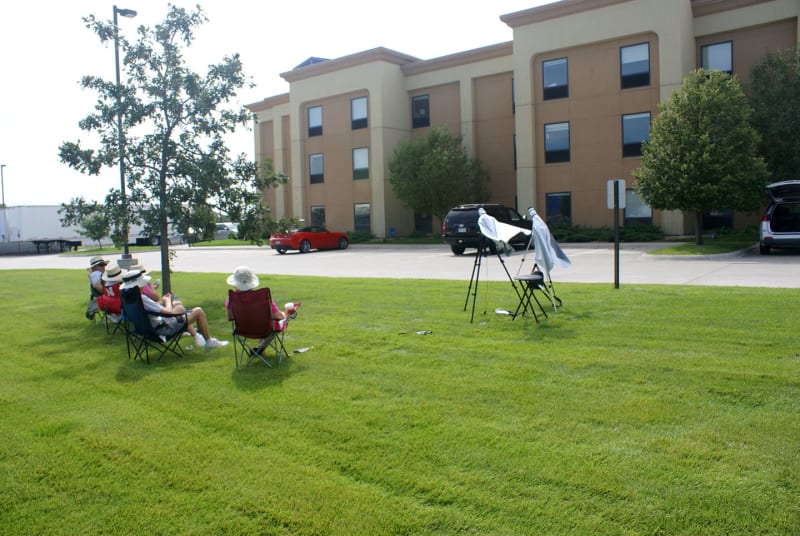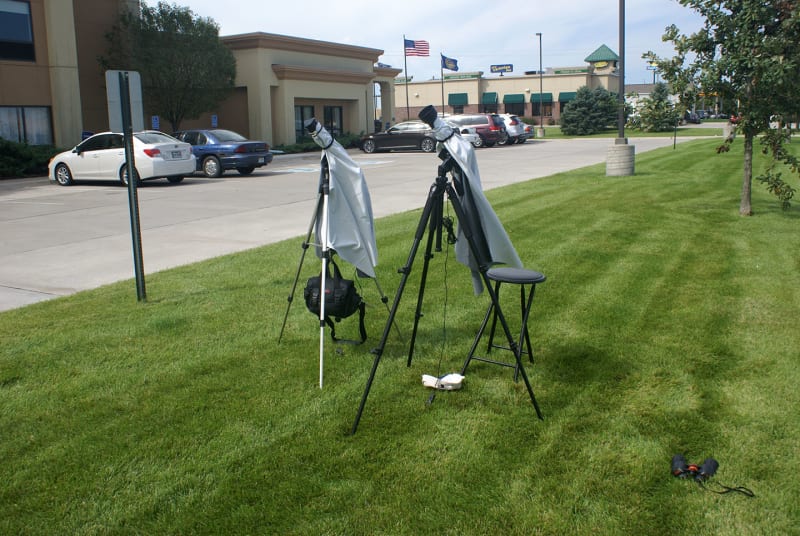Navigation
Install the app
How to install the app on iOS
Follow along with the video below to see how to install our site as a web app on your home screen.
Note: This feature may not be available in some browsers.
More options
Style variation
-
Congratulations MintJulep on being selected by the Eng-Tips community for having the most helpful posts in the forums last week. Way to Go!
You are using an out of date browser. It may not display this or other websites correctly.
You should upgrade or use an alternative browser.
You should upgrade or use an alternative browser.
Hotel Pool Ceiling Collapse - York, Nebraska 4
- Thread starter phamENG
- Start date
- Status
- Not open for further replies.
Very sad...
As the article states, nobody knows who is supposed to conduct the investigation on why this happened. You see that often in smaller communities. They barely have enough staff to review plans and issue building permits, but never enough to make sure the old buildings are still safe to occupy.
As the article states, nobody knows who is supposed to conduct the investigation on why this happened. You see that often in smaller communities. They barely have enough staff to review plans and issue building permits, but never enough to make sure the old buildings are still safe to occupy.
There could have been negligent homicide, a criminal charge. Because local people, and perhaps local government people, are likely involved, Nebraska should have sent an investigatory team. For a first look, probably a DA, state police, and a couple of construction guys to check it out.
I DO hope the potential crime scene was closed up.
The possible crime could have been in attaching the dropped ceiling to the concrete in a thoroughly and notably improper manner. If that "method" was easy enough to see, the building inspector could also be charged.
There was a death due to a construction failure, and I'm not sure that "It was an accident." should be as far as it goes.
spsalso
I DO hope the potential crime scene was closed up.
The possible crime could have been in attaching the dropped ceiling to the concrete in a thoroughly and notably improper manner. If that "method" was easy enough to see, the building inspector could also be charged.
There was a death due to a construction failure, and I'm not sure that "It was an accident." should be as far as it goes.
spsalso
- Thread starter
- #4
spsalso - it would depend on when they determine the 'negligence' occured. Was it during design, or was it when the collapse happened? I'm not a lawyer, and I'm not from Nebraska, so I can't say for certain - but I believe the norm is to start the clock from either the time the design is completed or the CO is issued - I think it's been decided both ways in the courts.
A quick Google search says that the statute of limitations would be less than 7 years. And the hotel opened...12 years ago? So there's unlikely to be a criminal case. May not be a civil case against the design team, either. Against the hotel for failing to maintain the structure...that might have teeth.
A quick Google search says that the statute of limitations would be less than 7 years. And the hotel opened...12 years ago? So there's unlikely to be a criminal case. May not be a civil case against the design team, either. Against the hotel for failing to maintain the structure...that might have teeth.
phamENG,
Good point on the statute of limitations. In Nebraska, it's 3 years for manslaughter.
However:
"Generally, the statute of limitations starts when the crime occurs. But in circumstances where it's difficult to discover the crime or a victim might be particularly scared to report it, the law might delay the starting of the time clock or extend the limitations period."
It's certainly difficult to discover the crime if the ceiling is still glued up and the kid is alive. As in 3 years ago. This could argue for a much more recent start date.
"Against the hotel for failing to maintain the structure..."
Was there any evidence that the ceiling needed maintenance?
Did the builder leave maintenance instructions with the owner that the owner did not follow?
Are there any well known maintenance demands for a sheet rock ceiling?
I DO appreciate that the problem could be a damp environment, as you noted.
At the VERY least, the State contractor's board should be down there to investigate whether the contractor should lose his license.
Around here, we had the (in)famous Berkeley balcony collapse, where several people died. There WAS a criminal investigation for that one.
spsalso
Good point on the statute of limitations. In Nebraska, it's 3 years for manslaughter.
However:
"Generally, the statute of limitations starts when the crime occurs. But in circumstances where it's difficult to discover the crime or a victim might be particularly scared to report it, the law might delay the starting of the time clock or extend the limitations period."
It's certainly difficult to discover the crime if the ceiling is still glued up and the kid is alive. As in 3 years ago. This could argue for a much more recent start date.
"Against the hotel for failing to maintain the structure..."
Was there any evidence that the ceiling needed maintenance?
Did the builder leave maintenance instructions with the owner that the owner did not follow?
Are there any well known maintenance demands for a sheet rock ceiling?
I DO appreciate that the problem could be a damp environment, as you noted.
At the VERY least, the State contractor's board should be down there to investigate whether the contractor should lose his license.
Around here, we had the (in)famous Berkeley balcony collapse, where several people died. There WAS a criminal investigation for that one.
spsalso
- Thread starter
- #6
As far as I can see, the locals are doing nothing beyond saying it's not their fault and congratulating themselves on the quality of their response.
With the Berkeley collapse that I mentioned above, it appears that the only thing that got a real investigation started was the continuing pressure from the families of the dead people. They (rightfully) raised hell about it. When I wanted information on what happened over at the site, I found that the Irish papers had better coverage than here (they were mostly visiting Irish students).
I recommend the parents friends and family of the kid do the same, and not give up. "Easy for me to say" (I just said it), but I think it would get results IF they're in the mood. I hope they are.
spsalso
With the Berkeley collapse that I mentioned above, it appears that the only thing that got a real investigation started was the continuing pressure from the families of the dead people. They (rightfully) raised hell about it. When I wanted information on what happened over at the site, I found that the Irish papers had better coverage than here (they were mostly visiting Irish students).
I recommend the parents friends and family of the kid do the same, and not give up. "Easy for me to say" (I just said it), but I think it would get results IF they're in the mood. I hope they are.
spsalso
-
3
- #8
JohnRBaker
Mechanical
I've swam in that pool. We stayed at that Hampton Inn in August 2017 when we were there to observe the total solar eclipse. We picked York, Nebraska because it was virtually on the center-line of the path of totality.
Here's a picture showing our set-up next to the hotel prior to the start of the event:

August 2017 (Sony A100)
And just for interest, here's a better shot of my camera set-ups:

August 2017 (Sony A100)
And for anyone who's never experienced a total solar eclipse, this is what it looked like during the period of totality:

August 2017 (Sony A100)
And while I'm at it, here's one of the better shots I got of the eclipse itself (note that there was a bit of overcast that day, but it was still an amazing experience):

August 2017 (Sony a6000)
John R. Baker, P.E. (ret)
Irvine, CA
Siemens PLM:
UG/NX Museum:
The secret of life is not finding someone to live with
It's finding someone you can't live without
Here's a picture showing our set-up next to the hotel prior to the start of the event:

August 2017 (Sony A100)
And just for interest, here's a better shot of my camera set-ups:

August 2017 (Sony A100)
And for anyone who's never experienced a total solar eclipse, this is what it looked like during the period of totality:

August 2017 (Sony A100)
And while I'm at it, here's one of the better shots I got of the eclipse itself (note that there was a bit of overcast that day, but it was still an amazing experience):

August 2017 (Sony a6000)
John R. Baker, P.E. (ret)
Irvine, CA
Siemens PLM:
UG/NX Museum:
The secret of life is not finding someone to live with
It's finding someone you can't live without
- Thread starter
- #10
spsalso said:I DO appreciate that the problem could be a damp environment, as you noted.
Probably worth noting that it's not just a damp environment that's a problem. There are glues for that. Some decent ones available at home depot (though I wouldn't want to hold up a ceiling with them, even in a dry environment).
A natatorium is an incredibly corrosive environment. It may not reach a level to harm your health (though some do - some pools make my eyes burn just looking at them), but there's still chlorine in the air. It attacks everything. There have been a few pool roof failures over the years as well as major repairs done because the engineers involved didn't understand the environment that was going to be placed inside the structure. It's pervasive and will cause corrosion in things we typically consider immune to corrosion. Here's an article that looks at varying levels of service for stainless steels in and around pools.
The Article's Abstract said:Chlorine and a hot, humid environment make indoor swimming pools a very corrosive environment for metals and materials, particularly near ceiling level. (Emphasis mine)
la belle vie
Structural
Wouldn’t all Hampton Inns built around this time be suspect? Perhaps they used the same kind of anchors as the Boston Central Artery tunnel. Or the hangers themselves were too light and unprotected for the environment. Heck it’s a motel used by travelers. Can’t the NTSB get involved?
- Thread starter
- #13
It's a Hilton brand, and they have no corporate news release on it: Hilton Press Releases 2022
-
1
- #14
EdStainless
Materials
Pools are a very tough environment. The smell and burning of your eyes isn't from the the Chlorine, it is from volatile chloramines.
These form when the Cl reacts with organics (mostly skin cells and urine).
Those of us that work with SS are forever concerned about chloride stress corrosion cracking.
In a normal Cl environment (rural coastal) there is a fairly reliable threshold temperature for CSCC.
In chloramines the temperature requirement drop from ~150F to 80F.
With plain steels the big risk is that they start to corrode and then the hydrogen from the corrosion causes cracking.
= = = = = = = = = = = = = = = = = = = =
P.E. Metallurgy, consulting work welcomed
These form when the Cl reacts with organics (mostly skin cells and urine).
Those of us that work with SS are forever concerned about chloride stress corrosion cracking.
In a normal Cl environment (rural coastal) there is a fairly reliable threshold temperature for CSCC.
In chloramines the temperature requirement drop from ~150F to 80F.
With plain steels the big risk is that they start to corrode and then the hydrogen from the corrosion causes cracking.
= = = = = = = = = = = = = = = = = = = =
P.E. Metallurgy, consulting work welcomed
"Wouldn’t all Hampton Inns built around this time be suspect?"
Mayybbeeeee.
Looking at the "after" picture:
I can see spots of "glue" on the upper surface of a lot of the sheetrock. This implies that SOME of the sheetrock was glued directly to the concrete ceiling.
I also see wood framing BELOW that sheetrock. That is, from the top, we have concrete, sheetrock, framing, more sheetrock.
I believe this room had a full sheetrock ceiling glued up to the concrete--wall to wall. Then the soffits were built underneath.
I see a lot of "nails" protruding from a 2x4 over on the middle left. I believe that 2x4, and others, was "nailed" up onto the sheetrock/concrete ceiling, further framing was installed to define the soffit, and then sheetrocked itself.
What those "nails" were is of interest. They clearly pulled out.
And the glue didn't do much to keep the top layer of sheetrock on the concrete, did it?
It does not appear that there were any hangers cast into the concrete.
It's quite possible that the soffit was an afterthought.
spsalso
Mayybbeeeee.
Looking at the "after" picture:
I can see spots of "glue" on the upper surface of a lot of the sheetrock. This implies that SOME of the sheetrock was glued directly to the concrete ceiling.
I also see wood framing BELOW that sheetrock. That is, from the top, we have concrete, sheetrock, framing, more sheetrock.
I believe this room had a full sheetrock ceiling glued up to the concrete--wall to wall. Then the soffits were built underneath.
I see a lot of "nails" protruding from a 2x4 over on the middle left. I believe that 2x4, and others, was "nailed" up onto the sheetrock/concrete ceiling, further framing was installed to define the soffit, and then sheetrocked itself.
What those "nails" were is of interest. They clearly pulled out.
And the glue didn't do much to keep the top layer of sheetrock on the concrete, did it?
It does not appear that there were any hangers cast into the concrete.
It's quite possible that the soffit was an afterthought.
spsalso
- Status
- Not open for further replies.
Similar threads
- Replies
- 14
- Views
- 1K
- Replies
- 0
- Views
- 3K
- Replies
- 13
- Views
- 13K
- Replies
- 8
- Views
- 6K
- Replies
- 1
- Views
- 673
